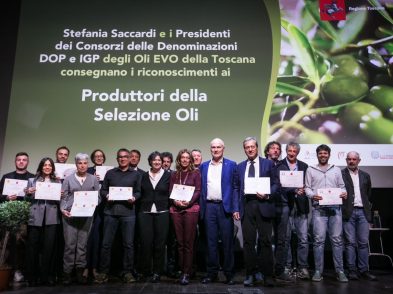A
wonderfully memorable food-filled weekend with friends in the countryside near
Siena has confirmed for me, once again, that Italians are the most
food-passionate people in the world. Some of the guests brought their own wines
and olive oils for me to taste, and we talked about the local vines, the
strains of their Sangiovese grapes, and the history of Chianti Classico.
We
cut leaves from the tall cavolo nero cabbage stalk in the vegetable garden of my friends’ country estate. We toasted
bread in the open fireplace big enough to fit the whole dining table, ourselves
included. We drizzled the toasted bread greedily with newly harvested extra
virgin olive oil, and finished with sprinklings of sea salt. We discussed olive
pruning and picking, how this season’s olive oil compared with the last,
followed by tastings of the different oils side by side.
We
talked about everything food or wine related. While we cooked, we spoke about
what we were preparing, and while we ate the first lunch course, we discussed
the imminent main course and even started planning dinner. Where other nations
talk about the weather or politics, Italians discuss their food with a
heartfelt passion, right down to the last sprinkle of salt, skimming of stock,
and browning of a meatball.
Thus,
after I blanched the cavolo nero leaves
in boiling salted water, sliced them finely, sautéed them with lashings of the
new oil seasoned with chilli, and served them over more saltless Tuscan bread
toasted over the glowing embers from fragrant olive branches, I learned how
Italians, from north to south, are immensely proud of how long their bread
lasts. (‘This bread is three days old,’ they made a point of telling me.)
When
the time came to cook the main lunch course, we put the costole di manzo, beef ribs, on the grill over the just-right
embers of olive branches, and then some locally made pork sausages, talking
about how they should sizzle first, then gently steam themselves cooked. I added
salt and oil in the last moments and moving the meat to the side of the fire to
rest before being brought to table. These are the mouth-watering moments that
become mouth-watering conversations.
To
one side of the enormous fireplace was a castagnaccio,
made with olive oil, rosemary and the new season’s chestnut flour, sweetened
with pinenuts and raisins. We ate it for dessert, with fresh ricotta and a
touch of honey, accompanied by a shot of homemade liqueur made with fennel
seeds. That’s when the serious matter of dinner was discussed more fully: What
to do with the leftover meat from lunch?
The
decision was unanimous: it was perfect for preparing polpette, meatballs. Tommaso said there had to be buccia di limone, lemon zest, in the
meatballs for dinner; his grandmother always used it and she made the best polpette in the village, it was a known
fact. Then the discussion moved on to the benefits of using the whole egg
versus the egg yolk only. The whole egg won. So, as we cleaned up from lunch,
we were already preparing dinner, peeling the potatoes to boil and mash as a
filler for the polpette, grating some
day-old bread to roll the polpette in
before frying them in last year’s olive oil. Some of the lunchtime leftover
sausage was secretly slipped to the dog under the table, while the rest was
minced up again with the leftover beef to make the polpette for dinner.
We
all knew the protocol: a walk was required before dinner to work up an
appetite; not doing so would show disrespect to the meal. During the walk an
aperitivo at the local bar was another ‘must,’ not only for shelter from the
sudden shower but to hear the village gossip and stimulate an appetite for the
meal to come. This is all so important.
So,
here I share with you the recipe created over the weekend with Giuseppe,
Enzo, Tommaso, Giulia and Francesca, with sage advice from Tommaso’s nonna, Giuseppina.
Buon appetito!
POLPETTE TOSCANE
This recipe
feeds six after a hard day’s work eating, drinking Chianti Classico, tasting
olive oil, laughing and cooking.
Ingredients
750 grams of
leftover cooked beef and sausages, which can be substituted with your own meat
leftovers
750 grams
peeled potatoes, boiled in salted water and mashed
3 whole eggs
buccia
di limone,
lemon zest
fresh
parsley, chopped
salt and
pepper as required
pan
grattato,
breadcrumbs
Parmigiano reggiano, grated
Pecorino
toscano, grated
Last
season’s extra virgin olive oil, for frying
Preparation
Skin the
cooked pork sausages and mince them roughly with the remaining cooked beef. A
slice of leftover prosciutto and a couple of sage leaves are great to add, if
you have them. Mix it all together with the mashed potatoes, the three eggs,
salt and pepper and half a cup of the breadcrumbs. If the mix seems too dry,
add a few spoons of milk; if it seems too wet, add more pan grattato. Once the consistency is firm enough to fist into a
ball while not sticking to your hand, add a large spoonful of each of the
cheeses, the buccia di limone, lemon
zest, and taste.
Roll the mix
into balls about the size of a golf ball in your palm, rolling these around in
a dish of a mixture of the pan grattato,
a small amount of each of the cheeses, some parsely and some cracked pepper.
Mix well, then squash each ball to flatten.
Heat up a
heavy-based pan with a good dose of last year’s olive oil and cook the
flattened balls until golden and crispy. Drain and serve with a salad of
bitter, crispy lettuce greens and accompany with a nice fresh glass of Bolgheri
Vermentino Toscano.







